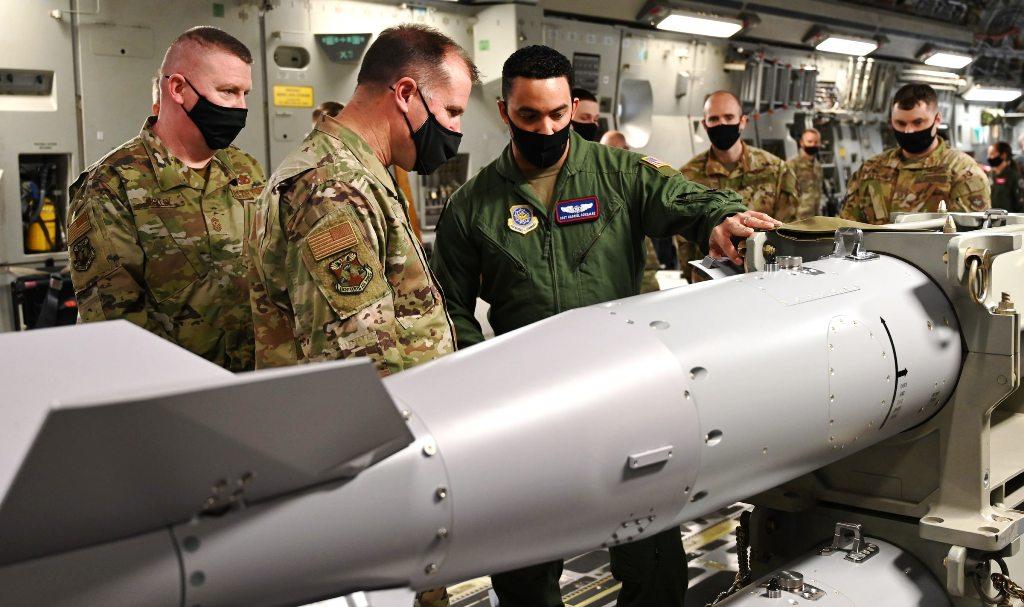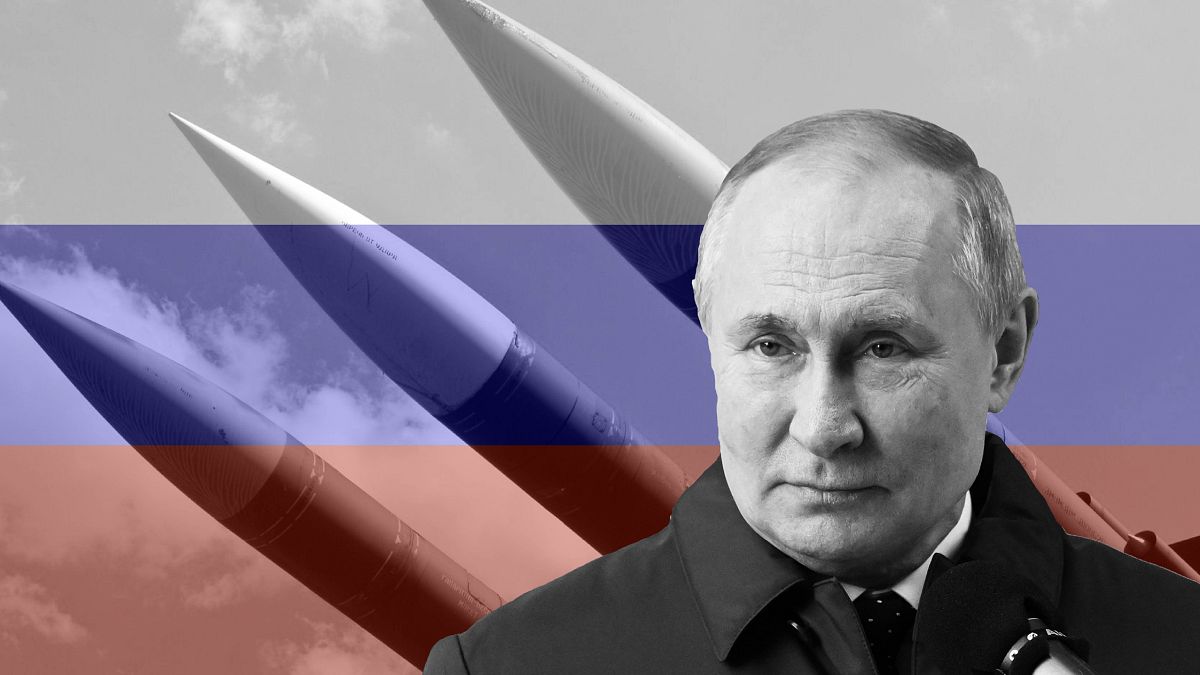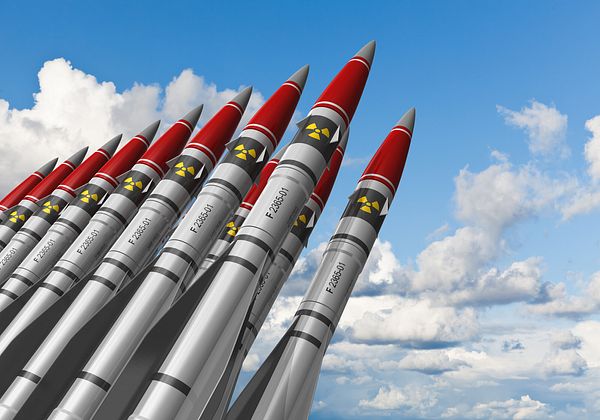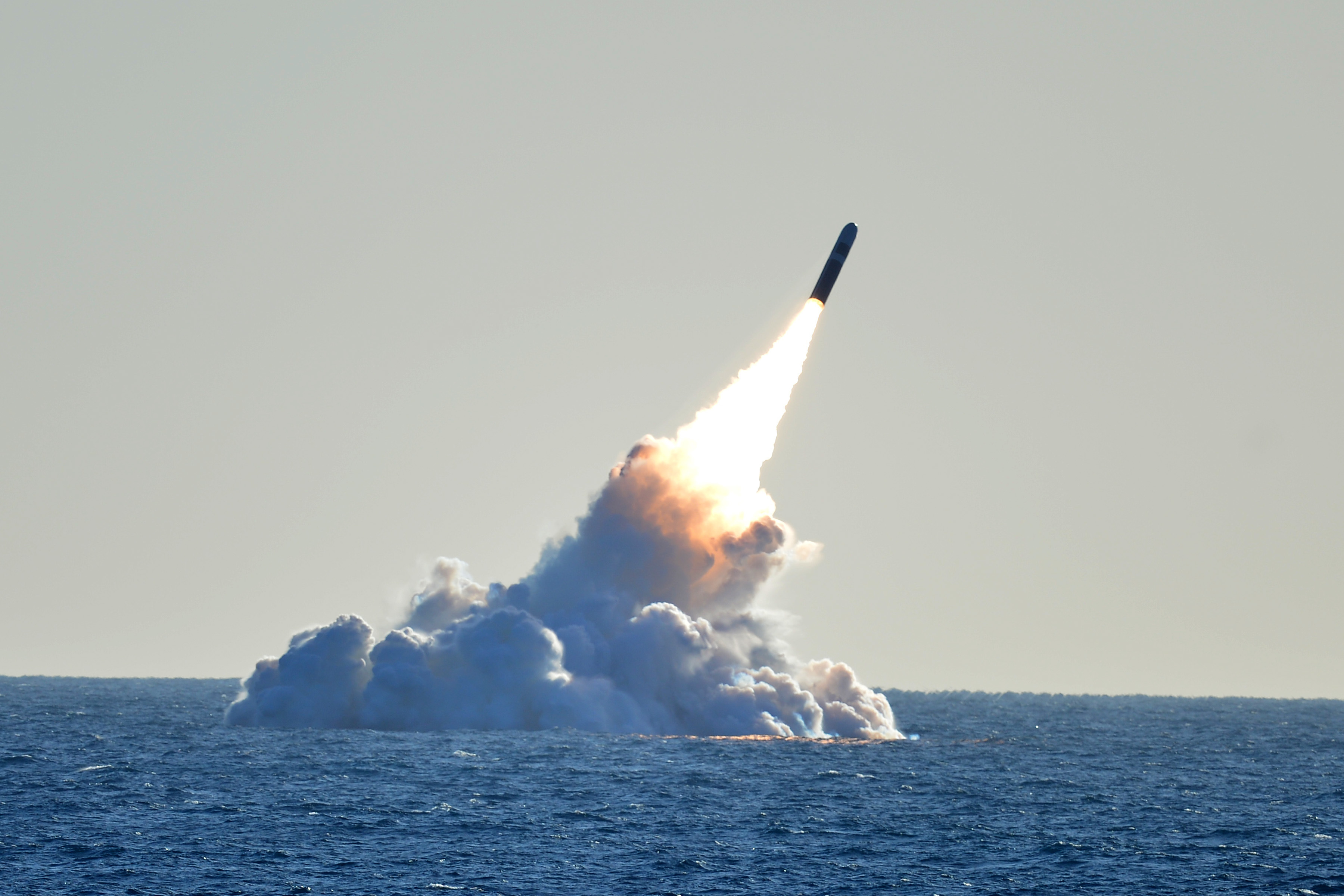News
Biden Sends B61-12 Tactical Nuclear Weapons to Europe

On Saturday, Russia’s Deputy Foreign Minister Alexander Grushko stated that the rapid deployment of updated US B61 tactical nuclear weapons at NATO facilities in Europe would lower the “nuclear threshold” and that Russia would factor the move into its military strategy.
Russia’s invasion of Ukraine had sparked the most serious clash between Moscow and Washington since the 1962 Cuban Missile Crisis when the two Cold War superpowers came dangerously near nuclear war.
Russia has approximately 2,000 operational, tactical nuclear weapons, whereas the US has approximately 200 such weapons, half located at facilities in Italy, Germany, Turkey, Belgium, and the Netherlands.
According to Reuters, the US told a confidential NATO meeting to speed the deployment of the B61-12, an upgraded variant of the B61, with the new bombs arriving at European locations in December, several months earlier than intended.
“We cannot ignore the intentions to modernize nuclear weapons, especially the free-fall bombs that are being deployed in Europe,” Russian Deputy Foreign Minister Alexander Grushko told reporters.
According to studies by the Federation of American Scientists, the 12-foot B61-12 gravity bomb has a lesser yield nuclear payload than many previous variants but is more accurate and can penetrate below ground.
“The US is updating them, boosting their precision and reducing the force of the nuclear charge, turning these weapons into ‘battlefield weapons,’ lowering the nuclear threshold,” Grushko explained.
The US begins production of its latest tactical nuclear weapons.
The Biden Administration unveiled a new defence strategy Thursday that puts the United States on a Cold War-era footing with China and Russia, outlining a plan to confront two nuclear peer adversaries for the first time in history with a multi-year build-up of modernized weaponry, strengthened foreign alliances, and a total overhaul of the American nuclear arsenal.
The 80-page book serves as the Administration’s plan for global security in the coming decades, stating unequivocally that the United States faces two formidable but very distinct competitors.
It sees China as a long-term “pacing challenge” because of its expanding military projection in the Pacific region, while Russia is an immediate “acute threat” because of its ongoing war with Ukraine and repeated threats to launch a nuclear strike.
“We deliberately chose the word ‘acute,'” Defense Secretary Lloyd Austin told reporters at the Pentagon. “Unlike China, Russia cannot long-term challenge the United States, but Russian aggression poses an urgent and severe threat to our interests and principles.”
In recent weeks, Russian missile assaults on civilian targets in Ukraine and unsubstantiated allegations of a pending “dirty bomb” detonation have fueled worries that the world is on the verge of nuclear Armageddon.
According to Austin, the Administration is deeply concerned about the conflict’s escalation, but it remains committed to providing Ukraine with weapons and the means to defend itself.
Russian President Vladimir Putin has often discussed the use of nuclear weapons in the eight-month-old conflict, and this week oversaw nuclear drills involving Russian submarines, bombers, and ballistic missile launches within Russia.
Austin dismissed suspicions that the war drills were a cover for a genuine nuclear assault, saying US intelligence had found no evidence of such preparations.
He said senior Russian officials had privately stated that there are no plans to use a nuclear bomb in Ukraine, but the US remained wary.
“It would be the first time in almost 70 years that a nuclear bomb has been used, so that certainly has the potential to change things in the world community,” Austin added. “We will continue to explain that any type of use of a weapon of that type, or even the discussion of such usage, is hazardous and irresponsible.”
Meanwhile, China is portrayed as the “most relevant strategic competitor for the future decades” in the strategic plan. According to the US, Beijing is actively working to undercut US alliances with Asian partners by strengthening its military and nuclear forces and threatening to invade the US-allied island of Taiwan.
“China is the only challenger out there with both the will and, increasingly, the power to remake the international system,” Austin said.
The Administration has concluded that Beijing intends to triple the number of nuclear weapons to 1,000 by 2030 while also building hundreds of additional silos capable of firing long-range ballistic missiles that hit the United States and its far-flung nuclear troops.
While the United States has a more than 10-to-1 edge over China regarding nuclear warheads and delivery systems, the Pentagon sees a need to prepare for the decades ahead.
The Chinese nuclear buildup is an unprecedented challenge for the military, which has only had to focus on deterring one near-peer adversary—formerly the Soviet Union, now Russia—from launching a nuclear assault since World War II’s end.
“I do not want to imply that this is a solved or closed situation and that we now have the answers,” a senior defence official who was not authorized to talk publicly on the subject told reporters.
“This is uncharted ground for us… How can you combat one opponent with enough reserves to keep the other at bay? And the second element of that cannot be a solution in which we need 2,000 nuclear warheads if China has 1,000 and Russia has 1,000 because that would be an arms race that no one wants to be in.”
More here: Inside America’s $100 Billion Mission to Modernize Its Aging Nuclear Missiles
Austin’s proposal departs significantly from President Joe Biden’s campaign commitment to diminish the role of nuclear weapons in US strategy.
There are hints toward disarmament, such as directions to stop developing nuclear-armed sea-launched cruise missiles, retire the heaviest gravity bomb in the US arsenal, the B83, and end the avowed strategy of keeping nuclear weapons as a “hedge against an unpredictable future.”
However, the big improvement that non-proliferation experts had hoped for has not occurred.
“It substantially maintains the nuclear deterrence strategy and posture, including capabilities added during the Trump Administration.” “It is unclear how it decreases the role of nuclear weapons as the President instructed,” says Leonor Tomero, Biden’s Deputy Assistant Secretary of Defense for nuclear and missile defence until October 2021.
“There is an urgent urgency to lower the risk of nuclear war, particularly when nuclear tensions are at their highest in years.”
According to Tomero, the hazards of miscalculation and unexpected quick escalation could lead to the use of nuclear weapons. “To avoid these dangers, these new threats necessitate clear solutions and effective efforts to adapt and reinforce deterrence,” she says.
Under a bilateral deal known as New START, the United States and Russia are currently limited in the number of strategic warheads and delivery systems until February 2026.
On the other hand, China is not a signatory to the pact and has shown no evidence of trying to rein in its nuclear weapons programs, raising concerns about whether further nuclear armament reductions by other countries will be achievable.
“There are repeated references to adjusting US posture in the future, which sets up a future Administration to increase the size of the arsenal or resume nuclear testing,” says Jeffrey Lewis, an analyst at the Middlebury Institute of Strategic Studies’ James Martin Center for Nonproliferation Studies.
The administration is particularly concerned about the growth of non-nuclear weapons systems, such as hypersonic missiles, and space-based and cyber capabilities.
The strategy calls for “creating enduring advantages,” which includes investments in the Defense Department’s people, changes in weapon-buying processes, and climate change preparation.
Other threats mentioned in the dossier include Iran and North Korea and “violent extremist organizations,” which is military lingo for terrorist groups.
The Biden team’s focus on Moscow and Beijing is consistent with the US national security complex’s aim to shift away from the Middle East’s quagmire of conflict and counter-terrorism operations and engage in Great Power competition.
Congress requires each administration to produce a new national defence policy every four years, and two versions are created: one secret and one public.
The strategy, unveiled on October 27, was the first time it incorporated the so-called Nuclear Posture Review and Missile Defense Review, which affected funding allocations for the following years.
“By weaving these documents together,” Austin explained, “we assist guarantee that the entire department is going ahead together and that our resources are aligned with our goals.”
News
Britain Must Be Ready for War in 3 Years, Warns New Army Chief

The new head of the Army has stated that Britain must be prepared to fight a war within three years.
Gen Sir Roland Walker has issued a warning about a variety of risks in what he calls a “increasingly volatile” environment.
However, he stated that war was not inevitable and that the Army had “just enough time” to prepare to prevent conflict.
He stated that the Army’s fighting capacity would be doubled by 2027 and tripled by the end of the decade.
Gen Walker warned that the Britain was under threat from a “axis of upheaval” in his first speech as Prime Minister on Tuesday.
Among the primary concerns confronting the Britain in the next years, as noted by the general in a briefing, is an enraged Russia, which may seek vengeance on the West for helping Ukraine, regardless of who wins the war.
He stated: “It doesn’t matter how it finishes. I believe Russia will emerge from it weaker objectively – or completely – but still very, very dangerous and seeking some form of retaliation for what we have done to assist Ukraine.”
Britain’s Government Defence Review and Military Challenges
He also warned that China was determined to retake Taiwan, and Iran was likely to seek nuclear weapons.
He stated that the threats they posed may become particularly acute in the next three years, and that these countries had formed a “mutual transactional relationship” since the war in Ukraine, sharing weaponry and technology.
However, he stated that the path to conflict was not “inexorable” if the UK re-established credible land troops to assist its deterrent strategy for avoiding war.
In his speech, he described his force of slightly over 70,000 regular troops as a “medium-sized army” and made no direct call for additional resources or men.
However, he pushed the British Army to adapt swiftly, focussing on technology such as artificial intelligence and weaponry rather than numbers.
His ultimate goal is for the Army to be capable of destroying an opponent three times its size.
This would entail firing quicker and farther, he said, aided by lessons learnt from the Ukraine war.
The general’s speech at the Royal United Services Institute land warfare conference comes only one week after the government began a “root and branch” defence review to “take a fresh look” at the challenges facing the armed services.
Defence Secretary John Healey launched the assessment, describing the existing status of the armed forces as “hollowed-out” and stating that “procurement waste and neglected morale cannot continue”.
According to the most recent Ministry of Defence (MoD) numbers from April 2024, the Britain’s regular Army forces total 75,325 troops (excluding Gurkhas and volunteers).
That figure has been declining in recent years, as recruiting has failed to match retention. The previous Conservative administration lowered the planned headcount from 82,000 to 72,500 by 2025.
Members of the NATO military alliance have agreed to spend at least 2% of GDP on defence by 2024, but several countries are unlikely to fulfil this goal.
The Britain presently spends 2.3% of its GDP on defence. Prime Minister Sir Keir Starmer has previously stated that the defence review will include a “roadmap” for increasing this to 2.5%, however he has yet to provide a date for this promise.
Source: BBC
News
Katie Ledecky Hopes For Clean Races At Paris Olympics In The Aftermath Of The Chinese Doping Scandal

PARIS — Katie Ledecky is looking for clean Olympic races. On Wednesday, Hope had pretty much reached her limit.
The American swimmer hopes to add to her six gold medals as she competes in the 400, 800, and 1,500 meters at the Paris Games. Her program starts with the heavy 400 on Saturday, featuring Ariarne Titmus and Summer McIntosh.

Katie Ledecky | ESPN Image
Katie Ledecky Hopes For Clean Races At Paris Olympics In The Aftermath Of The Chinese Doping Scandal
The 27-year-old Katie is competing in her fourth Summer Olympics, but the first since a doping scandal involving almost two dozen Chinese swimmers who tested positive for a banned chemical before the Tokyo Games — yet were permitted to compete with no consequences. The controversy has raised serious worries regarding the effectiveness of anti-doping initiatives.

Katie Ledecky | Vogue Image
“I hope everyone here is going to be competing clean this week,” Ledecky claimed. “But what truly counts is, were they training cleanly? Hopefully this has been the case. Hopefully, there has been worldwide testing.”
The International Olympic Committee has expressed concern over the ongoing US investigation into possible doping by Chinese swimmers. While awarding the 2034 Winter Olympics to Salt Lake City on Wednesday, the IOC urged Utah officials to do whatever they could to stop the FBI investigation.
“I think everyone’s heard what the athletes think,” Katie added. “They seek transparency. They want more answers to the remaining questions. At this point, we are here to race. We are going to race whoever is in the lane next to us.
“We are not paid to conduct the tests, so we trust those who follow their regulations. That applies both today and in the future.

Katie Ledecky | ESPN Image
Katie Ledecky Hopes For Clean Races At Paris Olympics In The Aftermath Of The Chinese Doping Scandal
SOURCE | AP
News
London Heatwave Alert: High Temperatures Set to Soar to 29C Next Week

As the summer holidays begin, London may experience an official heatwave with temperatures reaching up to 29 degrees Celsius.
The Met Office predicts a long period of sunny and dry weather for London after a soggy spring and summer.
After a cloudy day on Saturday, temperatures are expected to reach 27C on Sunday, with lots of sunlight.
On Monday and Tuesday, temperatures are forecast to peak at 29 degrees Celsius. Monday is forecast to offer more sunlight, while Tuesday may see some gloomy weather.
Temperatures are expected to remain in the high 20s next week, with lows of approximately 18C.
According to the Met Office, a heatwave is “an extended period of hot weather relative to the expected conditions of the area at that time of year, which may be accompanied by high humidity.”
In the United Kingdom, a heatwave is proclaimed when daily temperatures meet or surpass a certain level for at least three consecutive days.
In London, the heatwave threshold is 28 degrees Celsius.
The Met Office reported that the UK is experiencing hotter and wetter weather on average due to climate change.
The UK experienced its warmest May and April on record this year, despite damp and dismal conditions in many areas.
According to the Met Office’s State Of The UK Climate 2023 report published on Thursday, the UK experienced historic levels of extreme weather last year.
In the United Kingdom, 2023 was the second warmest year on record, bringing storms, flooding, strong heatwaves, and rising sea levels; only 2022 was warmer.
It was 0.8°C higher than the average from 1991 to 2020, and 1.66°C higher than the 1961 to 1990 average.
However, 2023 will be a “cool year” in comparison to 2100, based on the planet’s warming trajectory.
The government’s plan to adapt to the hazards presented by climate change is currently being challenged in the High Court by campaigners who allege the Tory administration’s July 2023 National Adaptation Programme (NAP) fails to adequately address 61 concerns.
Source: The Standard
-
World2 weeks ago
Former President Trump Survives Being Shot at Pennsylvania Rally
-
Tech4 weeks ago
Huawei Launches 5G-A Pioneers Program at MWC Shanghai 2024: Paving the Way for a Connected Future
-
Sports4 weeks ago
NBA Draft: Kyle Filipowski Withdraws Unexpectedly From The First Round
-
Tech4 weeks ago
ChatGPT Answers Undiscovered Questions and Outperforms Students.
-
News4 weeks ago
US Supreme Court Rejects Drug Deal that Protects the Sackler Family
-
Health4 weeks ago
US Health Agency Issues Dengue Virus Infection Warning



























